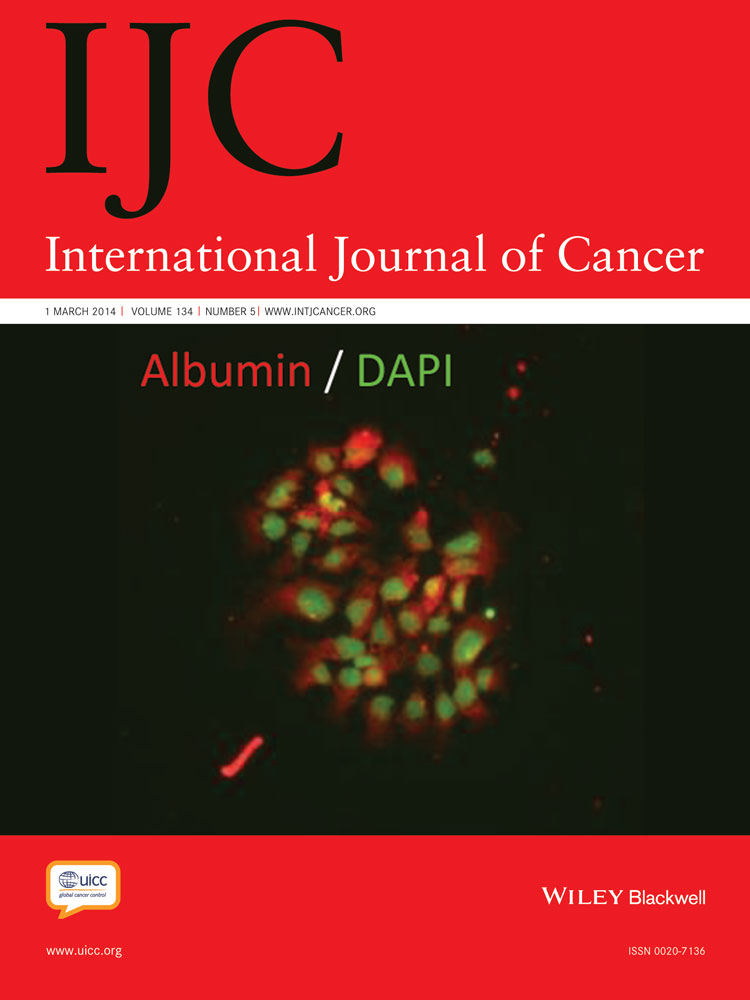Total antioxidant intake in relation to prostate cancer incidence in the Health Professionals Follow-Up Study
Abstract
Epidemiologic evidence on the association of antioxidant intake and prostate cancer incidence is inconsistent. Total antioxidant intake and prostate cancer incidence have not previously been examined. Using the ferric-reducing antioxidant potential (FRAP) assay, the total antioxidant content (TAC) of diet and supplements was assessed in relation to prostate cancer incidence. A prospective cohort of 47,896 men aged 40–75 years was followed from 1986 to 2008 for prostate cancer incidence (N = 5,656), and they completed food frequency questionnaires (FFQs) every 4 years. A FRAP value was assigned to each item in the FFQ, and for each individual, TAC scores for diet, supplements and both (total) were calculated. Major contributors of TAC intake at baseline were coffee (28%), fruit and vegetables (23%) and dietary supplements (23%). In multivariate analyses for dietary TAC a weak inverse association was observed [highest versus lowest quintiles: 0.91 (0.83–1.00, p-trend = 0.03) for total prostate cancer and 0.81 (0.64–1.01, p-trend = 0.04) for advanced prostate cancer]; this association was mainly due to coffee. No association of total TAC on prostate cancer incidence was observed. A positive association with lethal and advanced prostate cancers was observed in the highest quintile of supplemental TAC intake: 1.28 (0.98–1.65, p-trend < 0.01) and 1.15 (0.92–1.43, p-trend = 0.04). The weak association between dietary antioxidant intake and reduced prostate cancer incidence may be related to specific antioxidants in coffee, to nonantioxidant coffee compounds or other effects of drinking coffee. The indication of increased risk for lethal and advanced prostate cancers with high TAC intake from supplements warrants further investigation.
Abstract
What's new?
Certain individual antioxidants may be able to protect against prostate cancer, whereas others have no beneficial effect. Here, the impact of total antioxidant intake on prostate cancer incidence was examined. A weak inverse association was identified for dietary antioxidant intake and prostate cancer incidence, which was accounted for by coffee intake. A positive association was found for lethal and advanced prostate cancer and antioxidant intake from dietary supplements. The results suggest that different sources of total antioxidant capacity have different effects on prostate cancer risk and point toward coffee as an important subject of study in this context.




